Home Cytometry and Society Quotes

Contributed Quotes on Cytometry and Society

“During my 23 years of involvement in analytical Cytometry, I have had the privilege of witnessed the harnessing of automated cytometric technology with the rapidly expanding development of antibody production and the development of countless fluorescent probes to continually push the envelope of cellular discovery. It has been an energetic environment to “grow up” in and the impact of the technologies is immeasurable.
The ISAC community has played an incredibly significant role that may go unrecognized by many. The collaborative nature at the heart of the ISAC community is what has allowed the field to have such an impact on so many research and clinical disciplines. The relative lack of ego and the eagerness to share and educate each other without the constant fear of “being scooped” as exists in other scientific disciplines has been a driving force within the development of both the technologies and the applications. The impact of this on society cannot be calculated.”
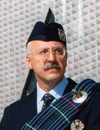
“Cytometry has become an essential help to microscopy analysis of hematological malignancies. Without cytometry you miss a lot of seemingly normal bone marrow aspirates. Because of cytometry, the many critical cutoff values that guide leukemia diagnosis and therapy will be reviewed and change clinical practice.”
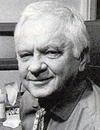
“Cytometry allows one to quantitatively analyze individual cells, assess heterogeneity of cell populations, detect cells with rare properties, identify cell subpopulations differing in particular attributes, correlate expression of particular attributes with each other in the same cells thus exploring their cause-effect relationship, and separate (sort) individual cells with desired properties. Not a single of the above goals, which are of utmost importance in biology and medicine, can be achieved by other methodologies. It is not surprising, therefore, that applications of cytometry had tremendous impact on progress in immunology, cell biology (cell proliferation/cell cycle, cell signaling, necrobiology), cancer research, and clinical medicine.”
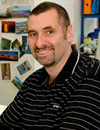
“Cytometry has played a pivotal role in a great many areas of research in the last few decades. Personally, in 20 years of involvement, I have seen the use of fluorescence microscopy for cell enumeration be replaced by multi-parameter cytometric measurement; I have seen the quantitation of DNA content move from laborious densitometry to rapid fluorimetry; I have seen the expansion of Core facilities designed to allow as many researchers as possible get the maximum value from a versatile and powerful technology; I have seen the whole-hearted acceptance of cytometry by researchers who have exploited the versatility of cytometry to measure population-based parameters, markers in individual cells and sub-cellular interactions which elucidate cellular pathways. This has led to an integrated approach which allows cytometry a critical role in Systems Biology. I am quite sure that the next few years will also prove fruitful as the resourcefulness of cytometrists continues to prove vital to all areas of modern science. And what’s more I hope to be part of that!”
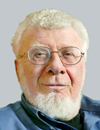
“Flow cytometry using the FACS was used from the late 60’s for basic research for establishing “clonal selection” theory of antibody formation and distinguishing and sorting all the myriad of different functional types of white blood cells. The first major clinical application was finding that the numbers of helper (CD4) T Cells are decreased by HIV infection leading to AIDS. A second early application of flow cytometry in the early 70s was distinguishing different leukemias allowing curative treatments for some to be specifically targeted.”
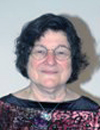
“Although we commonly think of the contributions of flow cytometry instruments in a clinical context, it is important to recognize the key role these instruments have played, and continue to play, in making modern understanding and manipulation of gene expression possible. From its inception, FACS was designed to distinguish and sort cells according to whether they expressed particular genes or combinations of genes. As such, it became a natural tool for the gene cloning and other genetic engineering methods on which the modern biotech industry rests and is as well ensconced in that industry as it is university biomedical and clinical research laboratories. Today, flow cytometry usage is once again expanding, this time to fill needs dictated by stem cell studies and the ultimate use of stem cells in medical practice. Fortunately, those of us working in the flow cytometry development arena have been able to both the capabilities of the instruments and the software that serves them keep pace with these demands.”
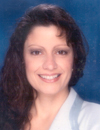
“Cytometry was definitely my calling. It allowed me to combine my clinical roots with my research goals. The timing was just perfect for me to accomplish some very exciting de novo research, which had astonishingly surprising clinical results. There seemed to be no time at all from the thought to the experiment! I feel very fortunate to be part of this science and the very gifted thinkers I have met along the way.”
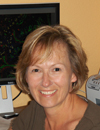
“ISAC continues to be a unique organization where Scientists, Engineers, Physicians, and Technologists come together to share ideas for cell analysis technology development and applied laboratory testing. The achievements ISAC society members are recognized in basic research, translational medicine, and clinical laboratories throughout the world. This is a dynamic society whose members are always striving to achieve excellence in making cell measurements and to help others be successful in doing the same. I am proud that I have had the opportunity to serve ISAC as a Clinical Councilor. I encourage other members to volunteer their services to help ISAC build for its very bright future!”

“I was the main organizer of the International Conference of Pulse Cytophotometry at Voss in June 1979, where about 200 experts on flow cytometry were gathered from Europe and the US. For the first time we had a commercial exhibition at this type of conferences, and the day before the meeting started, people came with their equipment and started to install it. One of the technicians was testing a laser and got it focused on the wall in the exhibition room. He was busy and forgot the whole thing for a wile. As a result, the laser beam burned a small hole in the wood. The conference site was a hotel from 1890, a big wooden building, and the next day we told to the journalists from several newspapers and the Norwegian broadcasting that these instruments were so potent that the laser had burnt a hole in the wall of the hotel. They were amazed and wrote long articles about this phantastic new and dangerous technique.”

“Rapid, multiparametric, quantitative, single cell, flow cytometry analysis has made possible monitoring of the wild diversity and plasticity of the immune system. The dynamics of complex populations can be measured. Special attention can now focus on minor cell subtypes that may induce immune effects. Immuno-sociology is born.”
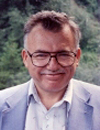
“Cytometry by the use of molecular markers has transformed the basis of immuno-hematology from visual observation to molecular medicine. The same transformation is now occurring in the rest of pathology. A major cause of this change is the use of fluorescent dyes, which ironically was, in some part, based on the inability of flow cytometry instrumentation to perform multiple useful absorbance measurements.”
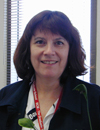
“Cytometry reflects the beauty of the world one cell at a time.”

“Flow cytometry is a powerful technology which has been used in many fields of cell biology, pharmacology and medicine. So, it is actually absolutely unpossible to conceive biological research without flow cytometric experiments. Therefore, few years ago, if cellular biologists needed a microscope in their laboratories, they now must also have a flow cytometer to perform quantifications on the parameters studied. Consequently, flow cytometry has been an important step in the evolution of cellular biology, and has played key roles in its development whatever the field of investigation considered. Therefore, there is biology before and after flow cytometry.
Before flow cytometry, cell biology was not yet completely a science because it was not possible to do reliable and objective measurements on whole cells. With the development of antibodies and fluorescent probes, with the enormous progresses of electronic and informatic these last ten years, data obtain by flow cytometry can be now easily quantified, and further used for statistical analyses, allowing thus reliable comparisons from one laboratory to another.
Therefore, flow cytometry can be considered as one of the main technologies which have contributed to the important development of biology, pharmacology and medicine this last 30 years.”

“Cytometry has provided a new set of tools for drug development. Using this high content, multi-parametric approach, more accurate and realistic determinations of novel agent pharmacology can now be made at a single cell level.”

“For centuries, the focus of biological research has been on understanding how biological systems work. In the last decade or so, the incredible complexity of those systems has been gradually realized, and the dream of the human mind achieving anything close to a full understanding of how entire cells, tissues or organisms work has begun to fade. It has been replaced with a vision for systems biology, which seeks to combine laboratory automation, machine learning and mathematical modeling to create such an understanding but in the memory of a computer rather than a scientist. Cytometry has a critical role to play in this systems biology revolution, since it provides the tools to quantitively describe the properties and behaviors of enormous numbers of individual cells. Such measurements will be needed for all component parts (especially RNAs, proteins, and lipids) of all cell types under thousands of conditions so that accurate, predictive models of cells can be created.”

“The pioneers of cytometry created an entire field because there was a very specific problem. Now we need to use these tools to address those in need in Africa. It’s not an option, it’s an obligation.”

“The drive to map complex biochemical and genetic behaviour to functional cellular units will continue to place cytometry at the forefront of the life sciences.”

“Flow cytometry is the only technology capable of resolving molecular and functional markers one cell at a time. This capability has had an enormous impact in both clinical diagnosis of human disease and in cell biology research.”

“Cytometry & cytomics constitute imperative essentials for the resolution of the molecular biocomplexity of tissues, organs and organisms”
